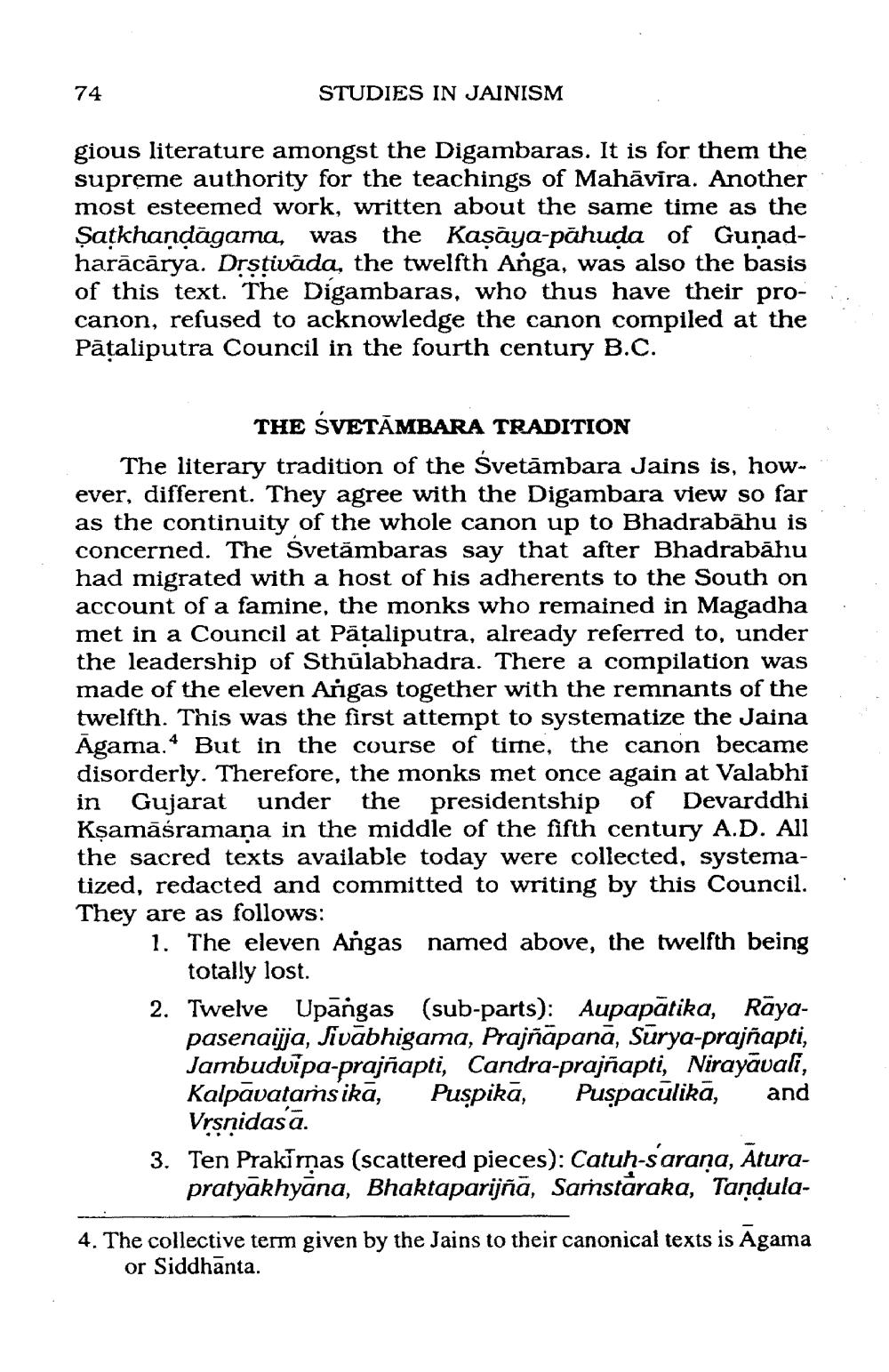________________
74
gious literature amongst the Digambaras. It is for them the supreme authority for the teachings of Mahavira. Another most esteemed work, written about the same time as the Satkhandagama, was the Kaṣaya-pahuḍa of Gunadharācārya. Dṛṣṭivada, the twelfth Anga, was also the basis of this text. The Digambaras, who thus have their procanon, refused to acknowledge the canon compiled at the Pataliputra Council in the fourth century B.C.
STUDIES IN JAINISM
THE SVETĀMBARA TRADITION
The literary tradition of the Svetambara Jains is, however, different. They agree with the Digambara view so far as the continuity of the whole canon up to Bhadrabahu is concerned. The Svetambaras say that after Bhadrabahu had migrated with a host of his adherents to the South on account of a famine, the monks who remained in Magadha met in a Council at Pâțaliputra, already referred to, under the leadership of Sthulabhadra. There a compilation was made of the eleven Angas together with the remnants of the twelfth. This was the first attempt to systematize the Jaina Agama. But in the course of time, the canon became disorderly. Therefore, the monks met once again at Valabhi Gujarat under the presidentship of Devarddhi Kṣamāśramana in the middle of the fifth century A.D. All the sacred texts available today were collected, systematized, redacted and committed to writing by this Council. They are as follows:
in
4
1. The eleven Angas named above, the twelfth being totally lost.
2. Twelve Upangas (sub-parts): Aupapātika, Rayapasenaijja, Jivābhigama, Prajñāpanā, Sūrya-prajñapti, Jambudvipa-prajñapti, Candra-prajñapti, Nirayāvali, Kalpavatams ikā, Puspikā, Puspaculikā, and Vrsnidasa.
3. Ten Prakiras (scattered pieces): Catuh-sarana, Aturapratyākhyana, Bhaktaparijñā, Samstaraka, Tandula
4. The collective term given by the Jains to their canonical texts is Agama or Siddhanta.




